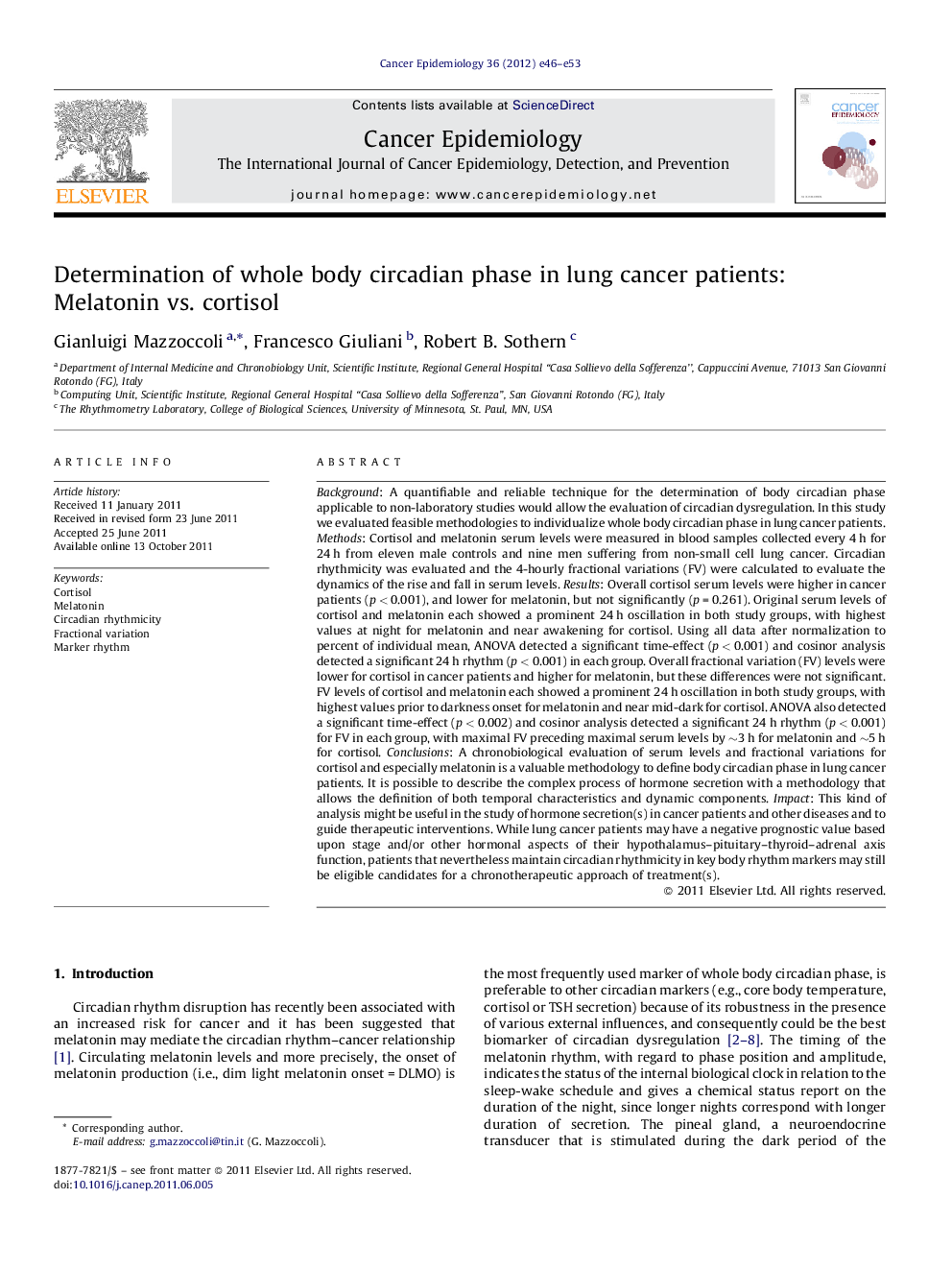| Article ID | Journal | Published Year | Pages | File Type |
|---|---|---|---|---|
| 2109205 | Cancer Epidemiology | 2012 | 8 Pages |
Background: A quantifiable and reliable technique for the determination of body circadian phase applicable to non-laboratory studies would allow the evaluation of circadian dysregulation. In this study we evaluated feasible methodologies to individualize whole body circadian phase in lung cancer patients. Methods: Cortisol and melatonin serum levels were measured in blood samples collected every 4 h for 24 h from eleven male controls and nine men suffering from non-small cell lung cancer. Circadian rhythmicity was evaluated and the 4-hourly fractional variations (FV) were calculated to evaluate the dynamics of the rise and fall in serum levels. Results: Overall cortisol serum levels were higher in cancer patients (p < 0.001), and lower for melatonin, but not significantly (p = 0.261). Original serum levels of cortisol and melatonin each showed a prominent 24 h oscillation in both study groups, with highest values at night for melatonin and near awakening for cortisol. Using all data after normalization to percent of individual mean, ANOVA detected a significant time-effect (p < 0.001) and cosinor analysis detected a significant 24 h rhythm (p < 0.001) in each group. Overall fractional variation (FV) levels were lower for cortisol in cancer patients and higher for melatonin, but these differences were not significant. FV levels of cortisol and melatonin each showed a prominent 24 h oscillation in both study groups, with highest values prior to darkness onset for melatonin and near mid-dark for cortisol. ANOVA also detected a significant time-effect (p < 0.002) and cosinor analysis detected a significant 24 h rhythm (p < 0.001) for FV in each group, with maximal FV preceding maximal serum levels by ∼3 h for melatonin and ∼5 h for cortisol. Conclusions: A chronobiological evaluation of serum levels and fractional variations for cortisol and especially melatonin is a valuable methodology to define body circadian phase in lung cancer patients. It is possible to describe the complex process of hormone secretion with a methodology that allows the definition of both temporal characteristics and dynamic components. Impact: This kind of analysis might be useful in the study of hormone secretion(s) in cancer patients and other diseases and to guide therapeutic interventions. While lung cancer patients may have a negative prognostic value based upon stage and/or other hormonal aspects of their hypothalamus–pituitary–thyroid–adrenal axis function, patients that nevertheless maintain circadian rhythmicity in key body rhythm markers may still be eligible candidates for a chronotherapeutic approach of treatment(s).
